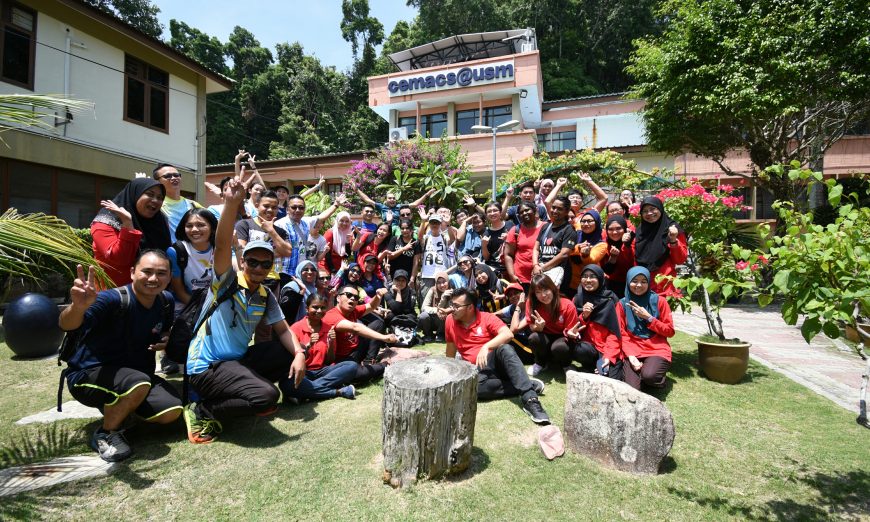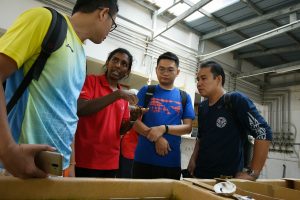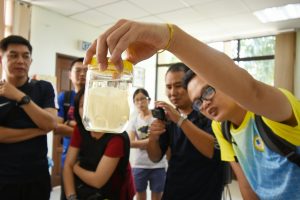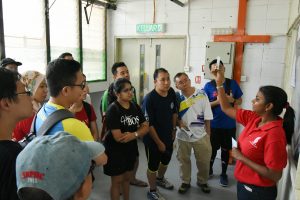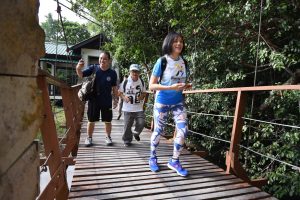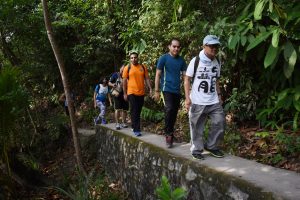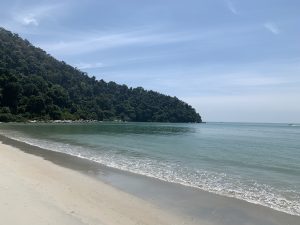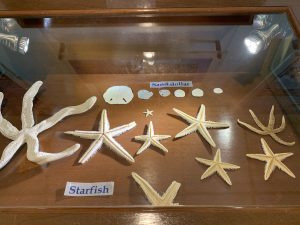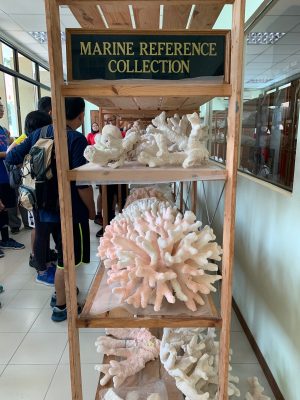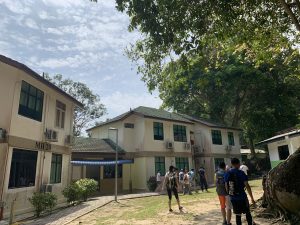PENANGITES usually take great pride in the beauty of the island and the many interesting places it offers local and foreign tourists. But sometimes, there are places that may be unknown to even long-time residents.
One such place is CEMACS, the acronym for Centre for Marine and Coastal Studies, that is located on a 3.75ha site at Teluk Aling within the Penang National Park.
Operated and managed by Universiti Sains Malaysia, the little known CEMACS has been attracting local and foreign scientists for a number of years for research work.
It is the oldest marine station in Malaysia, having been established in 1978. It was then upgraded to a centre of excellence called CEMACS in 1995 to have its own identity. Previously, some identified CEMACS as Muka Head, which actually has a lighthouse some further distance away.
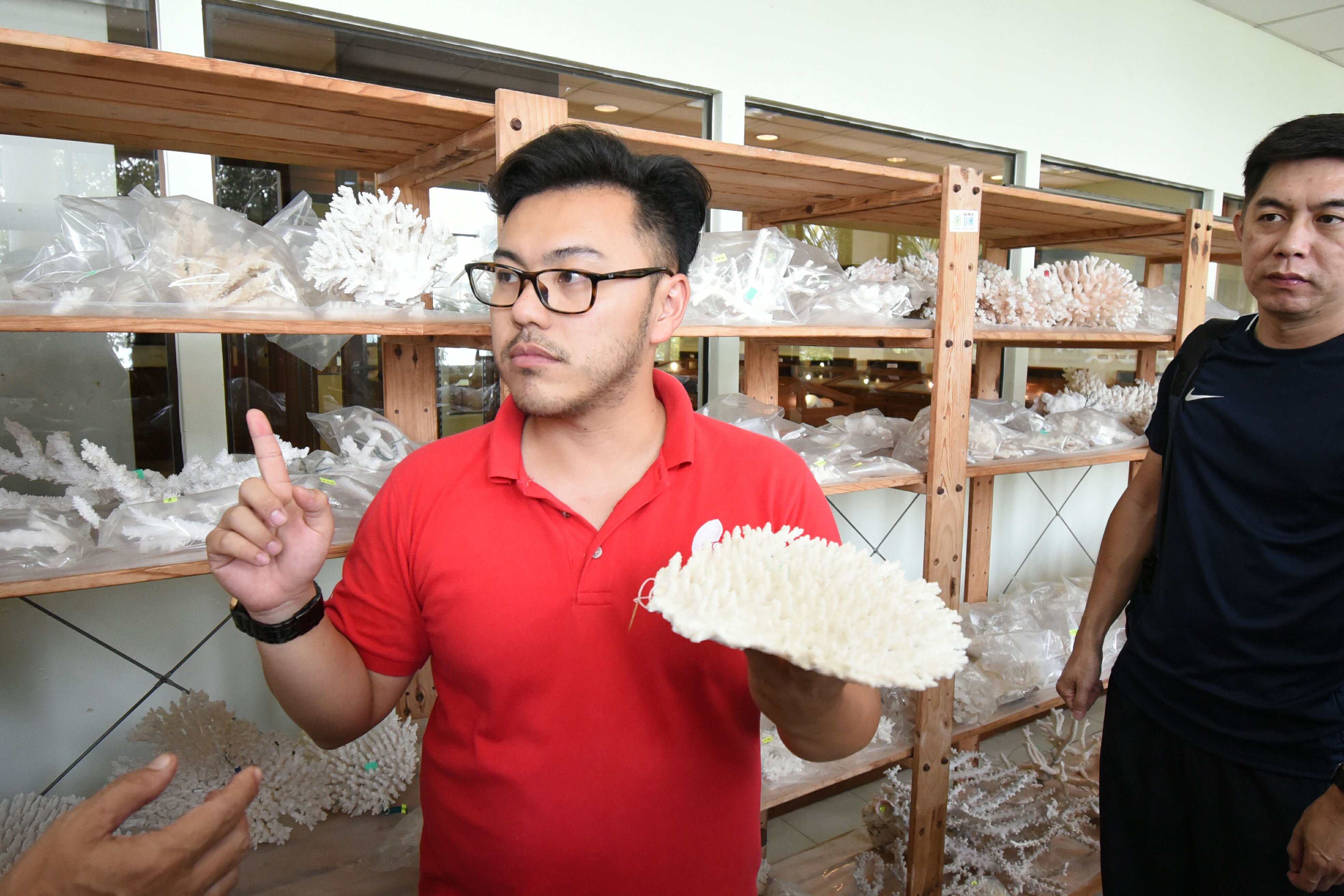
Just recently, 36 of us from the State Information Unit of the Chief Minister’s Office, had the golden opportunity to get a guided tour of CEMACS as part of our team building activity. It was the first visit for the majority of the group, which was led by the unit’s director Yap Lee Ying, who is also Chief Minister Chow Kon Yeow’s press secretary.
We first gathered at the Teluk Bahang jetty in the morning. After registering our names at the office there as required by the state national park authorities, we took a 45-minute hike through a natural trail to reach CEMACS at the northwestern tip of Penang island. If you are a fit and regular hiker, you can do it in 20 to 25 minutes.
The fresh air, views of sandy beaches and tranquility of the forest were a most welcome change although most of us were quick to perspire.
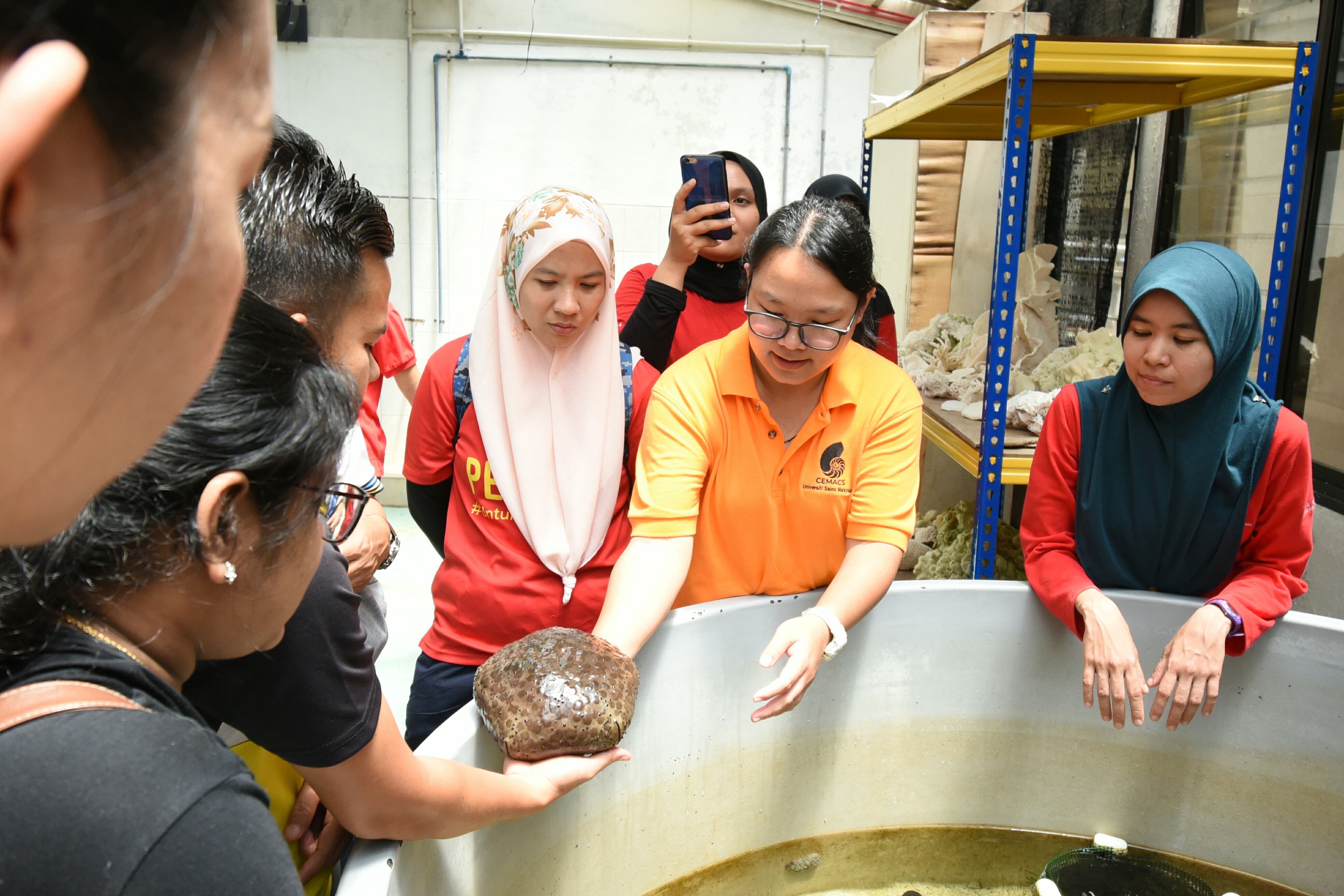
Beautifully kept gardens at the centre were the first thing that impressed us upon arrival. Its staff members warmly welcomed us and ushered us to a boardroom for a briefing by CEMACS director Prof Datuk Dr Aileen Tan Shau Hwai.
“We are in a national park and a lot of things are protected. We’re in a pristine environment. International scientists always like to come back here. They want to study the virgin forest at the back and the marine life in the sea in front,” said Dr Tan.
“The centre has become an attraction not only to local but also international institutions. In CEMACS, we focus a lot on sustainability in our work on green aquaculture, green mariculture, biodiversity and the conservation of marine ecosystems. This is all linked to our three core pillars – economy, environment and social.
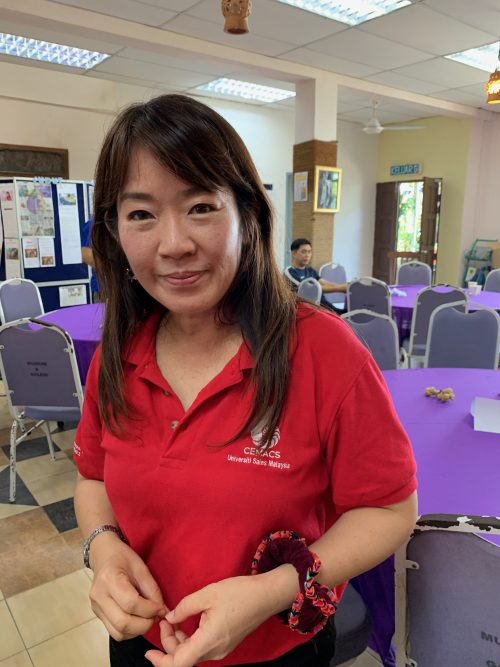
“While there are other universities in Malaysia that have followed in USM’s footsteps by setting up marine centres, CEMACS champions itself in invertebrate and sustainability. This is our niche. We have the biggest collection of invertebrates in Malaysia.
“As a centre of excellence for research, we also share knowledge in promoting education to students and the community.”
Dr Tan said CEMACS activities were also related to k-ecotourism to help the state and country generate revenue.
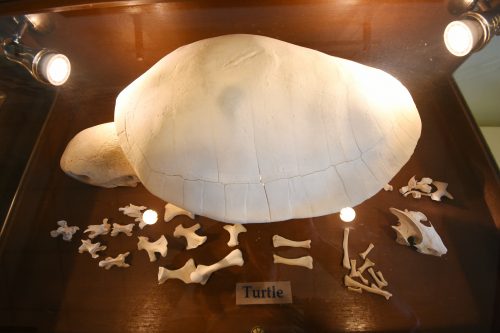
A lot of tourists, she said, not only come to Penang for food but also to see ‘something different’. This is where CEMACS, with its rich potential, wants to capitalise on it.
CEMACS also collaborates with some non-governmental organisations to promote STEM (Science, Technology, Engineering and Mathematics) education.
It has conducted educational workshops for students, with the youngest group comprising five-year-olds.
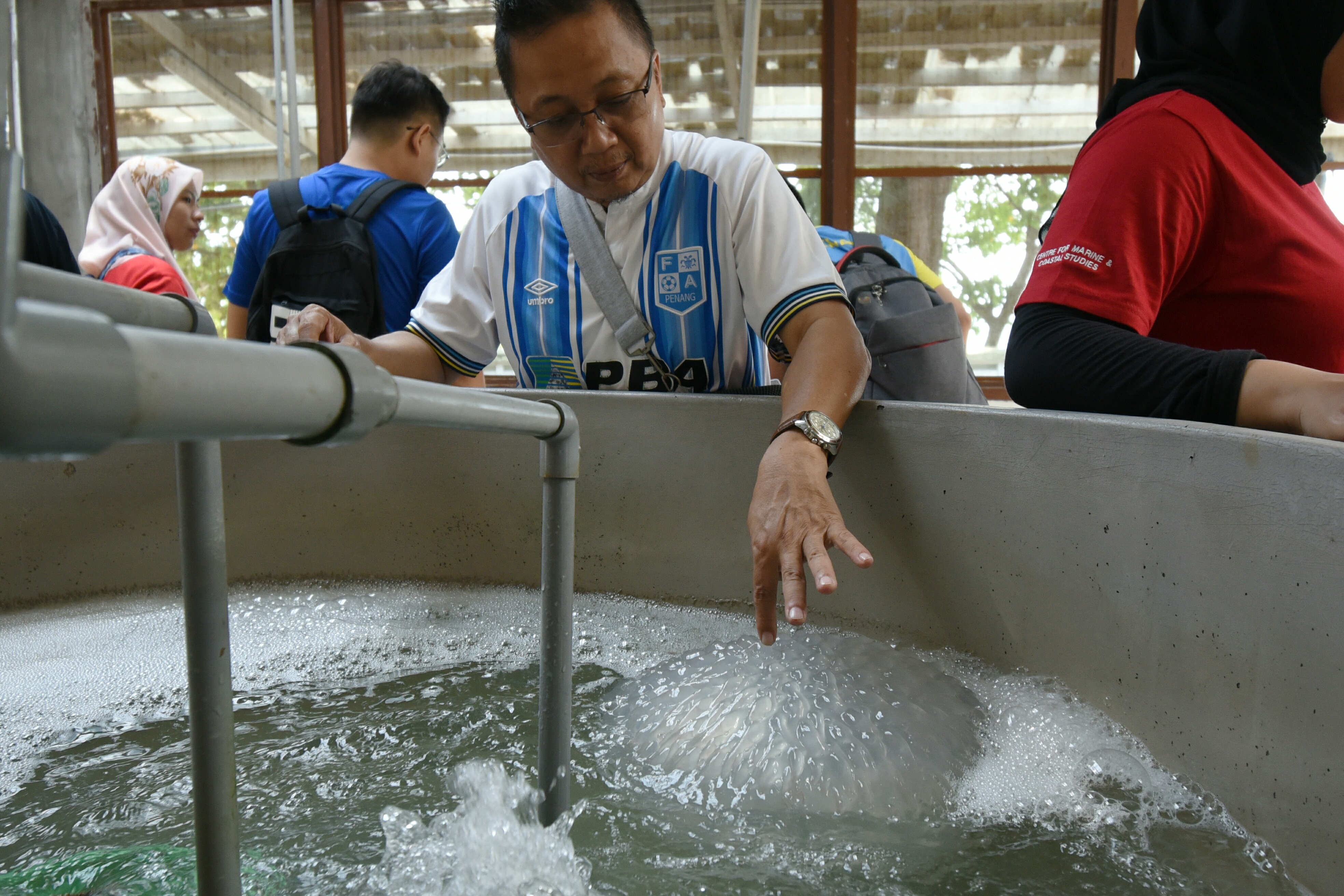
This year itself, the centre has received students from Glasgow, Kiel University of Germany, Hong Kong University, North Eastern University from Boston among others.
At the centre, there are five dormitory units that can house a maximum of 80 people and 12 flatlet units that has a maximum capacity for 40 people. Reservation and booking can be made online, two weeks before arrival.
Dr Tan said CEMACS also believes in contributing back to society, for instance by helping to train fishermen and the local community in the oyster farming programme to improve their standard of living. Dr Tan said oyster was previously thought to contain high amounts of cholesterol but it is actually of low cholesterol and is a healthy food.
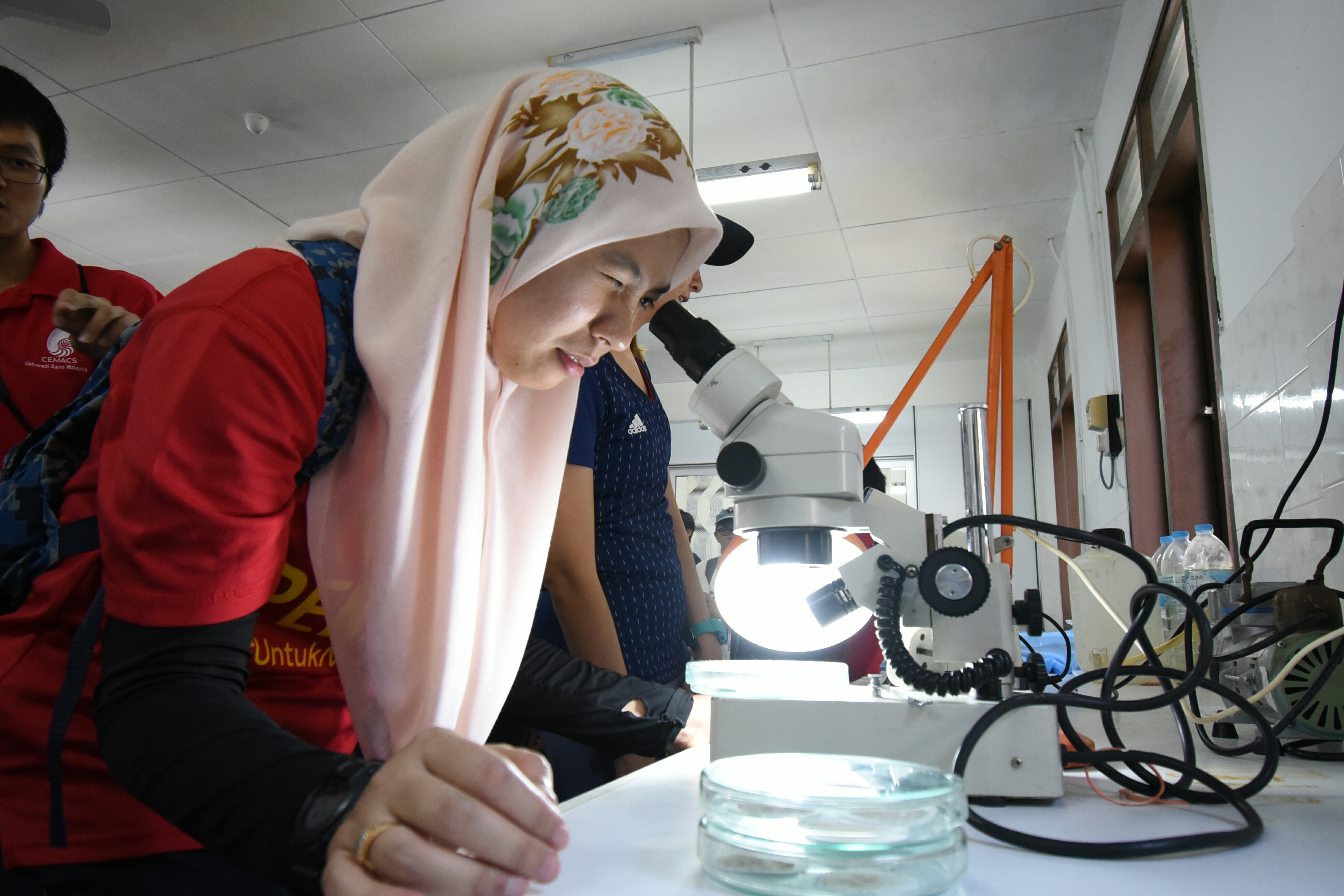
We were then taken on a tour to the Crustacean Research Lab, the Marine Invertebrate Collection Centre, Microplastic Lab and Hatchery Centre.
All in all, there was so much to learn from CEMACS deputy director Dr Annette Jaya Ram, lecturers Dr Abe Woo Sau Pinn and Dr Norlaila Mohd Zanuri, research officer N. Nithiyaa and their colleagues about mud crabs, corals, jellyfish, oyster, sea cucumbers, sea grapes and other creatures.
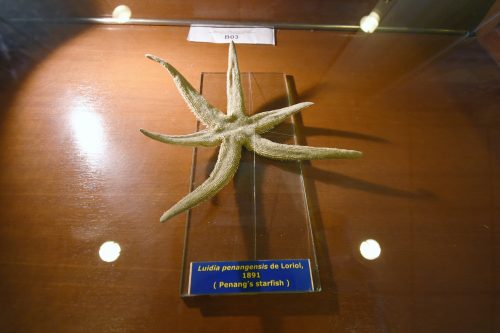
Out of the 2,000 over specimens at the invertebrate collection centre, one item worth noting is the seldom seen six-armed starfish, named as ‘Star of Penang’ (Luidia Penangensis) which was first recorded in 1891 by French taxonomist M. de Loriol.
At the end of the visit, we enjoyed a hearty lunch before heading back. This time, it was, thankfully for those with weaker legs, a mere five-minute boat ride back to Teluk Bahang jetty.

Visitors will undoubtedly leave the place marvelling at the many wonders of nature and appreciating the important role CEMACS is playing.
There was no doubt it was more than a very educational trip for us, thanks to Dr Tan and her team.
Story by K.H. Ong
Pix by Ahmad Adil Muhamad

